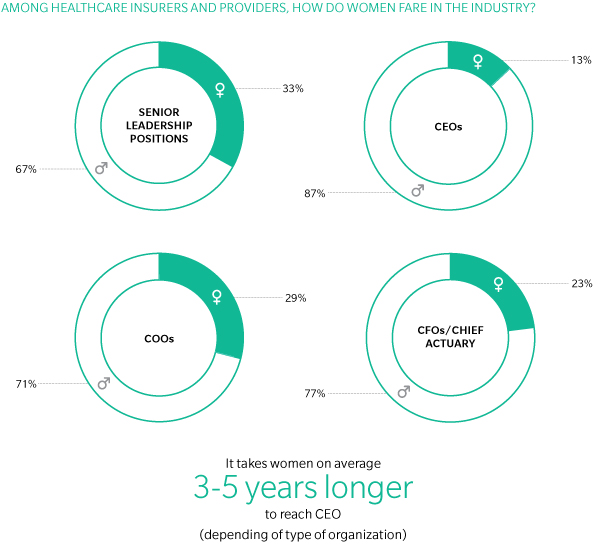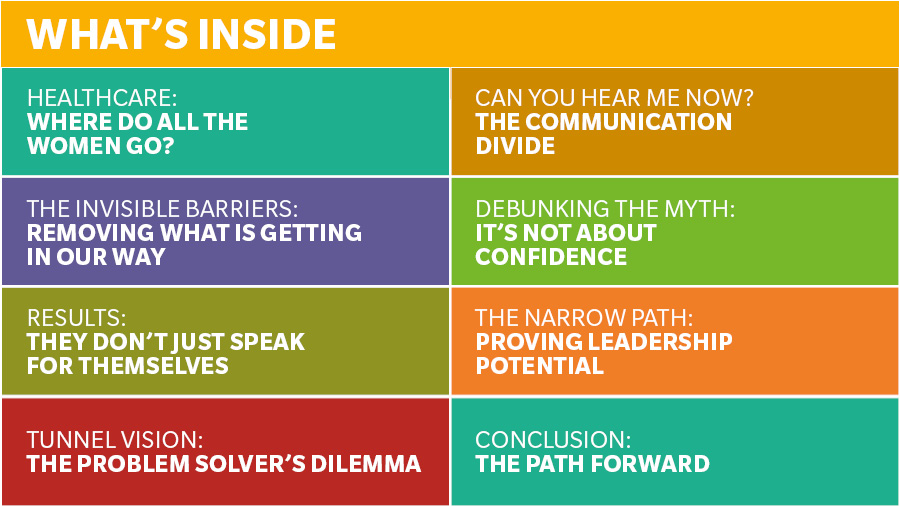Healthcare in the US is an industry where women consumers make 80 percent of buying and usage decisions and represent 65 percent of the workforce – a relatively high share compared to other industries such as financial services (46 percent) or tech (26 percent). Yet despite their influence as customers and the core workforce, they are notably under-represented in the industry's leadership – making up approximately 30 percent of C-suite teams and 13 percent of CEOs. Healthcare, unlike other industries, does not have a “women in healthcare” problem, but a “women in healthcare leadership” problem.

Studies have shown that diversity produces better outcomes – more innovation, more creative solutions to intractable problems, and ultimately better financial outcomes. How can an organization (and more broadly, the industry) move towards becoming consumer-oriented when it lacks a leadership team that reflects and relates to its primary customer? On top of this, disruptive innovation and merger and acquisition (M&A) activity is shattering the status quo (like the Amazon-Chase-Berkshire trifecta or CVS-Aetna, for starters), making any competitive edge all the more important.
WHAT’S HOLDING BACK PROGRESS? THE ANSWER IS SUBTLE
We were struck by two things in our research: 1) despite these known obstacles, some women have made it through, and 2) even with increased awareness of these concepts, most businesses still struggle to surmount them and achieve gender parity at the top. That led us to ask: What are the less visible, less understood causes of these commonly cited impediments? If the industry understood the causes better, could more change happen?
To get underneath the surface of things, we undertook the following:
- Developed profiles of C-suites and boards of 134 payers and providers (more than 3,000 executives), accounting for 70 percent of the market based on revenue, to better understand differentiation in female leadership among organizations
- Analyzed the paths of 112 payer and provider chief executive officers (CEOs) to follow the route to leadership in traditional healthcare organizations
- Spoke with more than 75 men and women in the industry – from directors to CEOs – to understand the visible and invisible dynamics at play for men and women
In this report, we provide a detailed action plan based on the insights gleaned from our data and personal interviews to address the issue of gender diversification in US healthcare leadership.
THREE CRITICAL ACTIONS FOR LEADERS TO MAKE MEANINGFUL PROGRESS


About the Authors
Terry Stone is the Managing Partner of the Health & Life Sciences Practice and Global Chair for Inclusion and Diversity at Oliver Wyman
Becky Miller is an Engagement Manager in the Health & Life Sciences Practice at Oliver Wyman
Elizabeth Southerlan is a Principal in the Health & Life Sciences Practice at Oliver Wyman
Alex Raun is a Consultant at Oliver Wyman



